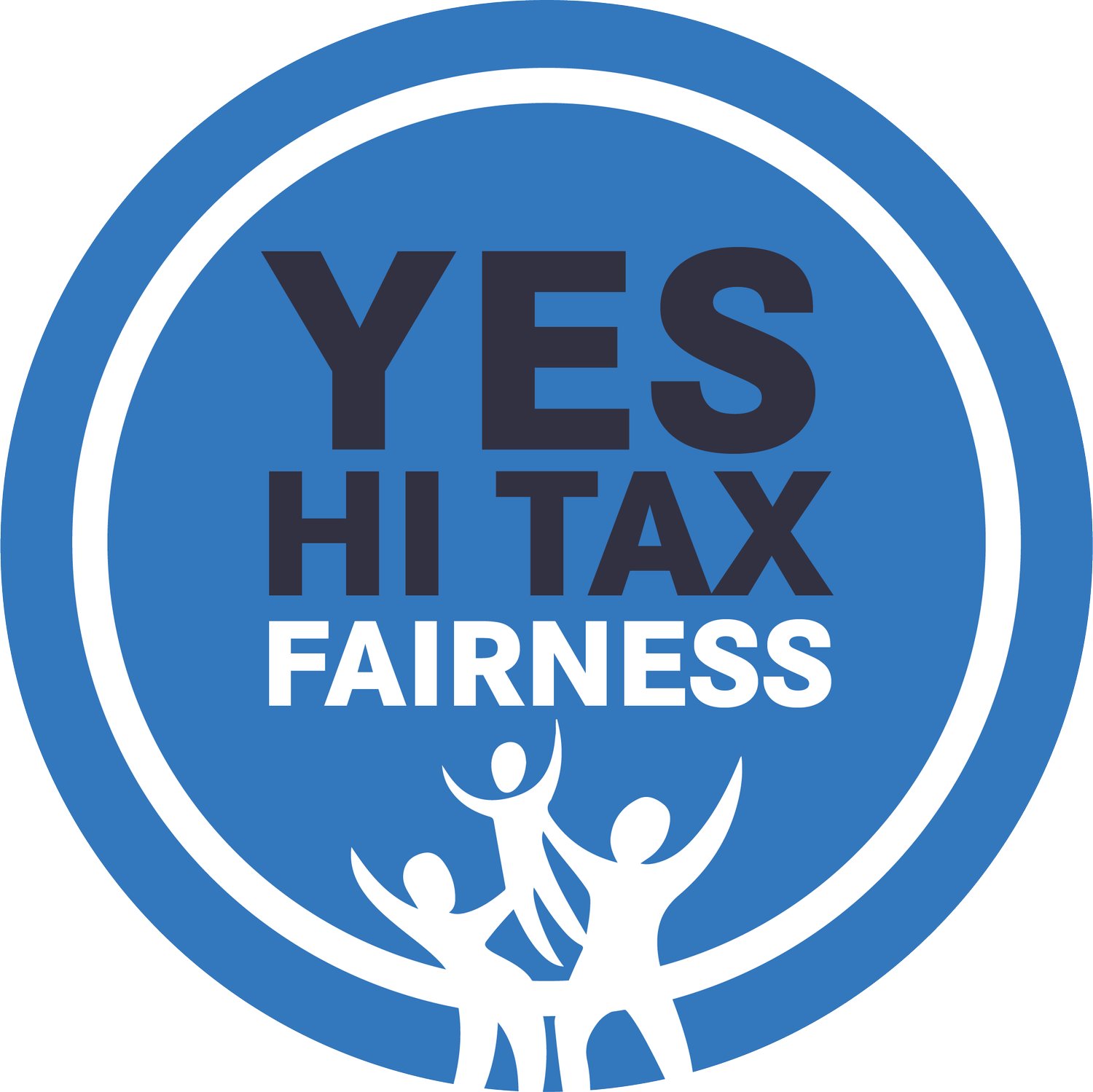Capital Gains Tax Reform
Income from wealth should be taxed like income from work.
Capital gains are profits (income) that come from selling a capital asset, such as stocks, bonds, art, antiques or real estate at a profit. Hawaiʻi is one of only nine states that allows capital gains to be taxed at a lower rate than ordinary working people’s income. This is, effectively, a tax loophole that almost entirely benefits the rich.
Because profits from capital gains overwhelmingly go to people who are already wealthy—those who have extra income to invest in capital assets in the first place—giving preferential tax treatment to capital gains income makes economic inequality worse. And because ownership of capital assets is concentrated in white households as a result of historic and ongoing systemic racism, lower tax rates on capital gains support and perpetuate racial inequities in the distribution of wealth.
It’s unfair that many struggling working families in Hawaiʻi must pay a higher tax rate on their wages and income than the rich pay on their income from capital gains. In order to make this tax system more equitable, capital gains income should be taxed at the same rates as regular income, with tax rates that progressively increase for wealthier taxpayers.
In the big picture, Hawaiʻi's most pressing problems—the housing shortage, cost of living burdens, the homelessness crisis, climate change-fueled environmental hazards, and more—all require tax revenue to solve. Our state needs to invest in our schools, hospitals, infrastructure, parks, programs for working families, and the development of truly affordable housing. Closing the capital gains tax loophole would allow the state to make critical investments using revenue collected from those who can afford to pay a little more.
Figure 1. The Capital Gains tax rate has been consistently lower than the top rate for personal income.
Source: Center on Budget & Policy Priorities
The capital gains tax loophole is a tax break for the richest and most privileged people in Hawaiʻi.
“Capital gains are heavily concentrated in the high end of the income distribution especially for nonresidents. The higher the income of taxpayers the greater the share of capital gains in their taxable income,” according to DOTAX.
This capital gains tax loophole benefits the highest-income taxpayers, including non-residents who profit from investing in real estate in Hawaiʻi. Of the taxpayers who had capital gains income in 2019, the 7.7 percent who earned $400,000 or more that year also received 79.4 percent of the capital gains income in the state.
Those making at least $1 million a year have a lower average effective tax rate than those in the income group just below them. The Hawaiʻi State Department of Taxation (DOTAX) explains, “The reason for this drop is that Hawaiʻi taxes net long-term capital gains at 7.25 percent and the highest income groups are more likely to utilize it.”
For those who made more than $400,000 a year in 2019, long-term capital gains were 41.4 percent of the total taxable income of residents, and 49.4 percent of nonresidents. “This partially explains why the average effective tax rates for this income group stay two to three percentage points below the marginal tax rate of 11 percent … while the rate on net long-term capital gains is set at 7.25 percent,” according to DOTAX.
Figure 2. The vast majority of wealth from capital gains is held by the very wealthiest among us.
Source: Hawaiʻi State Department of Taxation
Taxing capital gains like regular income would generate a lot of revenue, paid for by those at the top.
Long-term capital gains constitute 11.5 percent of total taxable income in the state, or nearly $4.3 billion in 2019.
If Hawaiʻi were to tax capital gains at the same rates as regular income, as most states do, Hawaiʻi would bring in about $180 million in new revenue per year, according to DOTAX, and 97 percent of it would be paid by the top 5 percent of earners in Hawaiʻi, or those making at least $261,000 a year.
Meanwhile the vast majority of taxpayers—those in the bottom 80 percent—would pay nothing at all.
Figure 3. Closing the capital gains loophole means only Hawaiʻi’s wealthiest earners would pay more.
Source: Analysis conducted by the Institute for Taxation and Economic Policy in January of 2022.
Closing the capital gains tax loophole is a win for racial justice.
While Native Hawaiians and Pacific Islanders represent 24 percent of the tax units in Hawaiʻi, they receive only 17 percent of the capital gains tax breaks.
Figure 4. The capital gains loophole reinforces racial inequities resulting from an ongoing legacy of colonialism that disproportionately disadvantages Native Hawaiians and Pacific Islanders in Hawaiʻi.
Source: Analysis conducted by the Institute for Taxation and Economic Policy in January of 2022.
Higher capital gains tax rates have no impact on business investment levels.
According to Warren Buffett, famed billionaire founder of Berkshire Hathaway, “I have worked with investors for 60 years and I have yet to see anyone—not even when capital gains rates were 39.9 percent in 1976-77—shy away from a sensible investment because of the tax rate on the potential gain.”
Looking at the federal capital gains tax rates and real business investment over time, there is no relationship between taxing capital gains and investment levels.
In fact, the Penn Wharton Budget Model finds that raising the federal capital gains tax rate would actually increase long-term economic growth.
Figure 5. There is no relationship between taxing capital gains and investment. Real investment has continued to grow uninterrupted regardless of the top capital gains rate.
Source: Washington State Budget & Policy Center







